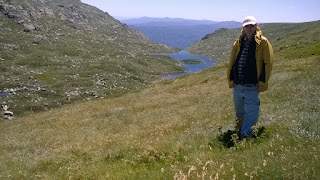The value of vacations

This is the first week of classes for the beginning of the academic year. In preparation for a busy semester, I took last week off work (my last four posts were automated) and visited my son in Canberra (where I grew up) and spent some time hiking in one of my favourite places , Kosciusko National Park. One photo is below. This reminded me of the importance of vacations and down time , of the therapeutic value of the nature drug , and of turning off your email occasionally. Above Lake Albina on the main range.





